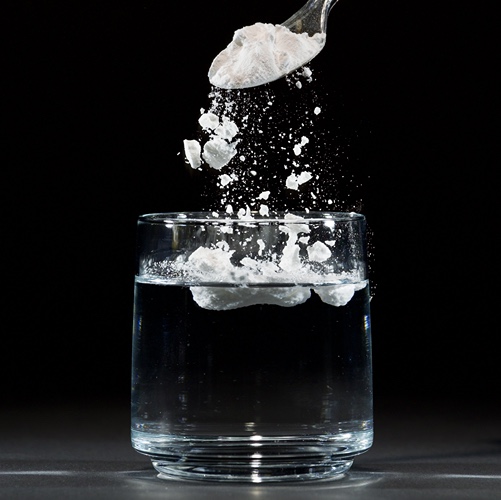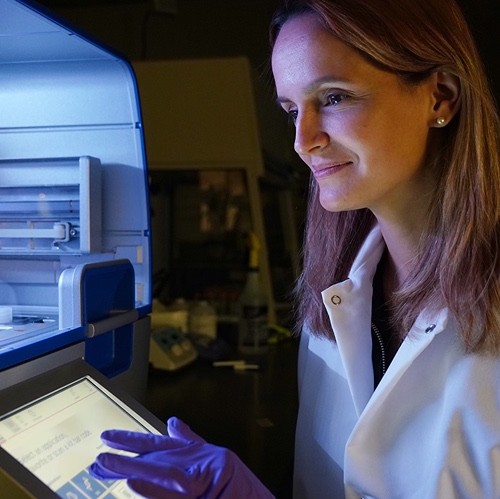Study: Food Ingredient Blends More Sensitive to Climate Change
WEST LAFAYETTE, Ind. - A recent Purdue study, featured on the cover of the May edition of the Journal of Food Science, deciphers why food ingredient blends are more sensitive to changes in climate than single ingredients.
Understanding how food ingredients interact differently when blended can help those in the industry consider best practices to handle or package their product for longer shelf life.
"Blending crystalline ingredients such as salt and sugar with amorphous solids (without uniform shape) such as proteins, starch-based ingredients, and gums destabilizes the ingredients when heated or exposed to increasing humidity," said Lisa Mauer, professor of Food Science who led the research at Purdue University. "This can be frustrating to food formulators and consumers alike."
The study builds on Mauer's previous research on the deliquescence behavior of crystalline ingredients which identified the humidities at which crystalline ingredients begin to dissolve (the underlying reason behind salt, sugar, and lemonade mixes clumping). To prevent deliquescence, the humidity must be kept lower than the deliquescence thresholds.
But this becomes more difficult when amorphous ingredients are added. "Picture amorphous ingredients as little sponges," Mauer said. "These sponges absorb water from the environment and their texture changes."
Consumers find examples of this when a bag of chips is left open. As the chips absorb humidity, their texture becomes rubbery and stale. Similarly, cotton candy quickly becomes sticky on a warm summer day. The food industry uses the term "water activity" to describe the mobility of water in these foods, which gets higher as more water is absorbed or as the temperature increases.
The study is the first to identify the crossover point between the crystalline ingredient deliquescence point and the amorphous ingredient water activity. Above the crossover point, crystalline ingredients dissolved in a closed system.
The study focused on blends of particulates that can be found in instant beverage mixes, seasoning blends, cake mixes, vitamin preblend mixes and powders used to flavor snack foods.
When food products move through distribution or home from grocery stores in the consumer's trunk on a hot day, variant climates can affect the food before it ever gets to the pantry.
"While the moisture sorption-related problems can be solved by packaging ingredient blends in individual serving sizes, this approach increases costs and the environmental burden associated with packaging does not solve the enhanced temperature sensitivity of the ingredient blends," Mauer said.
The research identified the moisture sorption properties of the ingredients, how the deliquescence points of the crystalline ingredients and the water activities of the amorphous ingredients are affected by temperature, how the ingredient blends respond to environments over time, and documented the physical state and thermal properties of ingredients and blends using advanced analytical techniques such as powder x-ray diffraction and differential scanning calorimetry which provides vital information to food formulators and industries seeking solutions to deliver the best product to the consumer.
The video series called "Take 5 for Food Science" features an interview with Mauer on this research published in the Journal of Food Science.
Writer: Cheri Frederick, 765-494-2406, cfrederick@purdue.edu
Source: Lisa Mauer, 765-494-9111, mauer@purdue.edu
Abstract
Moisture-Mediated Interactions Between Amorphous Maltodextrins and Crystalline Fructose
Alpana Thorat, Krystin N. Marrs, Mohamed K. Ghorab, Vincent Meunier, Laurent Forny, Lynne S. Taylor, *Lisa J. Mauer
West Lafayette, IN 47907 USA
Email: mauer@purdue.edu
The effects of coformulating amorphous maltodextrins (MDs) and crystalline fructose, a deliquescent solid, on the moisture sorption, deliquescence point (RH0), and glass transition temperature (Tg) behaviors were determined. Moisture sorption profiles of binary fructose: MD mixtures and individual ingredients were generated using controlled relative humidity (RH) desiccators and by dynamic vapor sorption techniques. Blends exhibited synergistic moisture uptake at RHs below the RH0 of fructose, attributed to the partial dissolution of fructose in plasticized MD matrices without a significant reduction in the RH0 of the undissolved fructose. Increasing storage temperature decreased the onset RH for moisture sorption synergy. At all storage RHs, the measured Tg (2nd scan) was significantly reduced in fructose: MD mixtures compared to individual MDs, and was related to both the synergistic moisture uptake in the blends and heat-induced ternary fructose-MD-water interactions in the differential scanning calorimeter. Differences were found between the behavior of fructose: MD blends and previous reports of sucrose: MD and NaCl: MD blends, caused in part by the lower RH0 of fructose. The enhanced moisture sorption in blends of deliquescent and amorphous ingredients could lead to problematic moisture-induced changes if storage conditions are not controlled.
Practical Application
Blends of crystalline and amorphous ingredients are widely found in the food industry, and it is important to recognize that these blends are often more sensitive to moisture and temperature than individual ingredients. Identifying the deliquescence RH0 of the crystalline ingredient across increasing temperatures, the % RHT, Tg, and aw of the amorphous ingredient across increasing moisture contents and/or temperatures, and the "crossover point" between the RH0 of the crystal and the aw of the amorphous component will facilitate selection of processing and storage conditions to promote or minimize environmental (moisture and temperature) interactions with ingredient blends.






